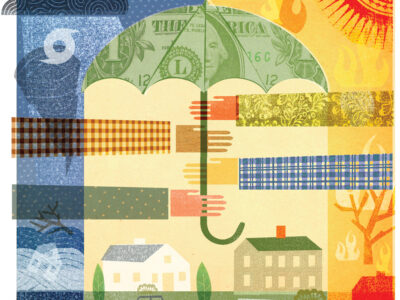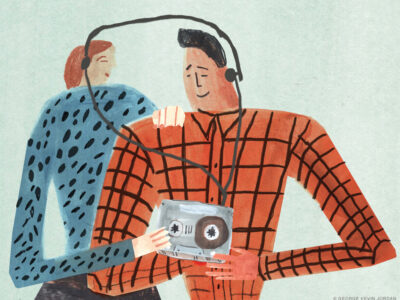
Grownups, kids, and the war on recess.
By Brian Sutton-Smith
It is better to play than do nothing, Confucius advised, and perhaps no statement sums up our current moment better than that half-hearted endorsement. In the 21st century virtually any activity is considered superior to doing nothing. Children’s play may be one of them, but it would seem to rank low on a list that prizes test scores and scholastic benchmarks above all else. Lately the very notion of play has become a hotly contested battleground—not among children, of course, but among psychologists, educators, policy makers, and the like. At times it can seem that adults spend more time debating jungle gyms than children spend playing on them.
In recent years the worlds of play, which were my primary areas of research at Penn, have multiplied so complexly that it is often difficult to know whether play has become an enemy or a contributor to children’s educational progress.
As a schoolteacher in New Zealand in the 1940s, I often transformed my classroom into a place for students to engage in free-form play. One of the benefits of this approach, in my experience, was that it increased their motivation to learn. I found similar views on display at a recent conference held by the Early Childhood Association of Florida, where there was great disgust and rage voiced over the No Child Left Behind Act of 2001, whose emphasis on test scores has marginalized and even eliminated activities such as gym and recess at some schools.
Yet what struck me most about this conference was its enormous exhibition space for commercial toy makers. The room was filled with literally hundreds of objects and activities designed to put play to work, so to speak, bolstering literacy, science knowledge, number skills, and so forth. The underlying message seemed to be that play might be important, but only insofar as it serves some secondary educational purpose.
The view from the United Kingdom is quite different. Not long ago I visited Leeds Metropolitan University, where undergraduates can now earn a B.A. in Play. These students are essentially being trained for supervisory positions at special playgrounds for children to use after school and on weekends—particularly children whose parents are engaged in work. The government provides salaries for supervisors who work in these new organizations.
Yet even in this context there was a philosophical battle being waged. Some think that these playgrounds should be reinvented to include a whole variety of after-school activities, such as painting and music and educational television, as well as the usual climbing and swinging devices. This was very much opposed by a few so-called “extremists” who regard those activities as adult intrusions. More important for children outside the classroom, the latter group argues, is for kids to invent their own diversions. To this end, these advocates want to supply children only with multiple possibilities—in the form of sand, water, trees, and various ambiguous objects—that are susceptible to such inventiveness.
At the bottom of this debate is a rarely asked but essential question: Where does play, as a behavior, come from? Its intrinsically autonomous and fun-making character gives us good reason to believe that play has a more evolutionary character than is usually suspected. It may indeed be like sex, another intrinsically pleasurable activity that is nonetheless a momentous adaptive biological phenomenon as the source of reproduction. Does children’s play have its own adaptive outcomes? And if so, should adults be meddling in it?
The past may contain an answer. The ancient histories of play generally characterize it as a voluntary apprenticeship in which children explore and master the adaptations necessary for survival. In some hunter-gatherer societies, for instance, children are left to form their own social play hierarchies that serve as precursors for real-life arrangements when their parents are killed in action. In this way, play can be interpreted as a kind of training in personal autonomy. Its wild liveliness and excitement—whether manifested in games, sport, theater, or other forms—may serve to defeat the ever-present depressions and anomie of everyday life, enabling children to emancipate themselves from anxiety and overcome the terrors haunting their dreams, which is a necessary component of growth and survival.
This dark psychological territory is reflected in jokes I collected from preadolescent children when I was teaching in Ohio 50 years ago. “Mommy, why are we out on a boat at night?” went one setup. The punch line came in the mother’s voice: “Shut up and tie the cement block around your leg.” Or as another one ran: “Oh Ma, I hate Grandma’s guts.” … “Shut up and eat what’s put in front of you.” It is through grappling with such things that children learn to face the stark realities of life.
The recent history provided for us by Howard P. Chudacoff in Children at Play: An American History shows us how in more agricultural times, play frequently took the form of imitations of farming, hunting, and housework. But as urbanization and industrialization gained pace, children’s play was often regarded by the more Puritanical as a private idleness and an introduction to the devil’s fancies. The result has been that in recent times there has been increasing adult organization of children’s play spheres to bring them in line with our modern private lives.
Modern toys and books often treat play as an individualistic imaginative enterprise conducted by children in their own playpen or bedroom—echoing the immediate individual ecology of the modern employee in his cubicle. But much of the modern developmental psychological emphasis is only upon the increases in “useful” learning and cognition that play does include—literacy, numeracy, and so forth.
Certainly learning in this more limited sense is a valuable part of play, but play has its own purposes that are more fundamental. Adults may sometimes be able to understand what children are accomplishing by it, but often they will not—and perhaps cannot, given how self-contained and irrational the mental worlds of children sometimes appear to be.
Tragically, these incidental, secondary uses of play are now often used to deny to children what they most require—which is to gain their own independence from the conflict and the pressures of the world around them. On the one hand we adult professionals cherish play as a means for children to develop mastery and autonomy, but on the other we seek to deprive them of the pride and power they get by upending our own sources of sanity.
Some time ago I attended a conference hosted by an institution called the Strong National Museum of Play in Rochester, New York, whose walls are emblazoned with musings on play by figures ranging from Plato and Nietzsche to Einstein and Matisse. Initially conceived as a toy museum, it has lately widened its immense scope to include a myriad of exhibitions for children in which children can actively participate and create the outcomes for themselves. Inside a structure that resembles a vast architectural tumbling of multicolored, room-sized building blocks, a series of enclosed play-pods resemble zoos, shops, libraries, films, and all kinds of spaces geared toward child-driven performance. We still need to know whether these fostered spontaneities lead children to return to their own local play worlds with a more general strength of autonomy, but this at least has some promise.
One wishes that those politicians who advocated testing arrangements with no leftover time for recess or classroom play were required to take a several-month imprisonment within this cathedral that so honors the profundity of play in all its forms.
“The play’s the thing wherein I’ll catch the conscience of the king,” Hamlet said. In the playpens and playgrounds of the 21st century, it is time to examine our own consciences—and reassess the wisdom of taking our children’s proud and adaptive autonomy away from them.
Brian Sutton-Smith, professor emeritus in the Graduate School of Education, is a world-renowned expert on play. His books include Play and Learning, Toys as Culture, and most recently The Ambiguity of Play.




